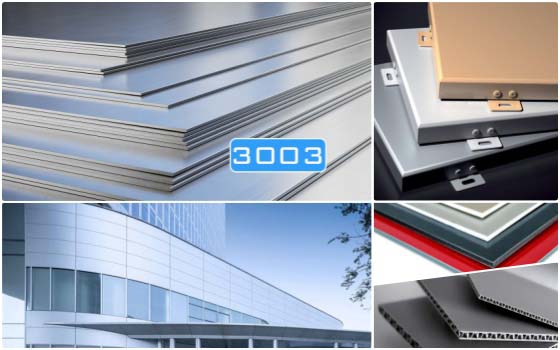- Email: sales@flait-aluminum.com
- Tel: 0086-13203837398

As a high-performance architectural decoration material, aluminum panels have become an indispensable part of modern architectural design language due to their lightweight nature, weather resistance, excellent formability, and rich color expressiveness. They are widely used for interior and exterior wall cladding in airports, train stations, stadiums, commercial complexes, and high-end office buildings. The realization of their superior performance relies not only on precise manufacturing processes but also begins with the scientific selection of base materials.
Not all aluminum alloys are suitable for manufacturing curtain wall aluminum panels. Factors such as strength, hardness, formability, weldability, and corrosion resistance need to be considered comprehensively. Below are several of the most commonly used aluminum alloy grades that comply with national standards:
✅ Characteristics: Purity up to 99.0%, it is commercially pure aluminum.
It offers extremely high corrosion resistance and excellent formability and workability, making it suitable for manufacturing special-shaped panels with complex forms and deep draws. However, its strength is relatively low, so it is often used for interior decoration or standard interior ceiling systems where high strength is not required.
✅ Characteristics: An aluminum-manganese (Al-Mn) series alloy, it is one of the most widely used rust-proof aluminum alloys with the best overall performance.
The addition of manganese (Mn) increases its strength by about 20% compared to the 1100 series, while maintaining good formability, weldability, and excellent corrosion resistance. The 3003-H24 temper achieves a perfect balance between strength and ductility, making it the preferred material for manufacturing conventional flat sheets and curved panels with slight curvature, offering high cost-effectiveness.
✅ Characteristics: An aluminum-magnesium (Al-Mg) series alloy, magnesium (Mg) is the main alloying element.
It has medium to high strength, high fatigue strength, and excellent resistance to marine atmospheric corrosion. Its strength is significantly higher than the 3003 series, and it performs particularly well in highly corrosive environments such as coastal areas and high humidity. Additionally, it has good paint adhesion. Therefore, 5052 is often used for high-end projects requiring specific strength and special corrosion resistance, such as seaside buildings and ship interiors.
 Formability: 1100 > 3003 > 5052. For complex shapes, prioritize 1100 or 3003 aluminum sheets.
Formability: 1100 > 3003 > 5052. For complex shapes, prioritize 1100 or 3003 aluminum sheets. Strength: 5052 > 3003 > 1100. For applications requiring wind pressure resistance or impact resistance, choose 5052 aluminum sheets or higher specifications.
Strength: 5052 > 3003 > 1100. For applications requiring wind pressure resistance or impact resistance, choose 5052 aluminum sheets or higher specifications. Corrosion Resistance: All three are excellent, but 5052 aluminum sheet performs best in harsh environments.
Corrosion Resistance: All three are excellent, but 5052 aluminum sheet performs best in harsh environments. Cost: 1100 and 3003 aluminum sheets are more economical, while 5052 is slightly higher. Currently, in the building curtain wall sector, 3003-H24 aluminum sheet is the recognized standard base material and dominates the market.
Cost: 1100 and 3003 aluminum sheets are more economical, while 5052 is slightly higher. Currently, in the building curtain wall sector, 3003-H24 aluminum sheet is the recognized standard base material and dominates the market.